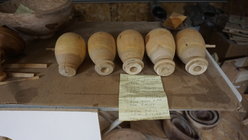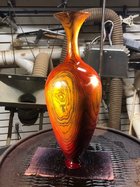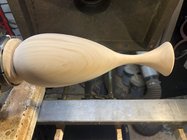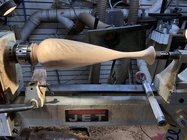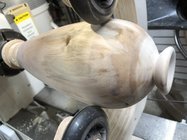What type of glue do you recommend when dealing with green (sappy) wood?
I'm planning to turn a hollow form with a narrow neck so will enter from the bottom. I'll first cut out the end containing the tenon, hollow the interior and then replace the end, gluing it back in place. I've used this technique several times before with kiln dried wood. This time I am planning a little larger piece, The cherry blank I'm starting with is about 6x6x12. Its quite sappy and will take years to dry naturally. I don't have a kiln.
The instructions on the labels on all my different glues begin with words to the effect "make sure the surfaces are clean and dry".
So what would you do?
I'm planning to turn a hollow form with a narrow neck so will enter from the bottom. I'll first cut out the end containing the tenon, hollow the interior and then replace the end, gluing it back in place. I've used this technique several times before with kiln dried wood. This time I am planning a little larger piece, The cherry blank I'm starting with is about 6x6x12. Its quite sappy and will take years to dry naturally. I don't have a kiln.
The instructions on the labels on all my different glues begin with words to the effect "make sure the surfaces are clean and dry".
So what would you do?
Last edited:

